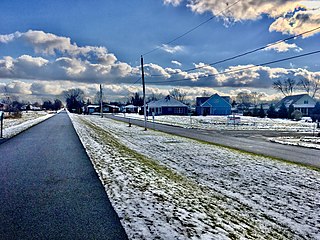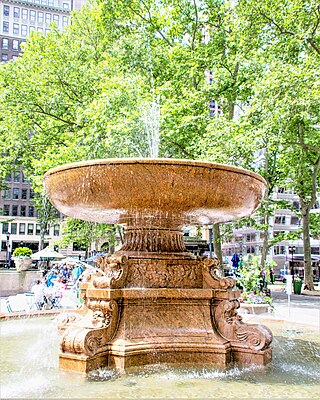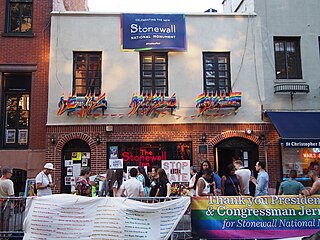
Riverside Park is a scenic waterfront public park in the Upper West Side, Morningside Heights, and Hamilton Heights neighborhoods of the borough of Manhattan in New York City. The park measures 4 miles (6.4 km) long and 100 to 500 feet wide, running between the Hudson River and Henry Hudson Parkway to the west and the serpentine Riverside Drive to the east.

Philip Henry Sheridan was a career United States Army officer and a Union general in the American Civil War. His career was noted for his rapid rise to major general and his close association with General-in-chief Ulysses S. Grant, who transferred Sheridan from command of an infantry division in the Western Theater to lead the Cavalry Corps of the Army of the Potomac in the East. In 1864, he defeated Confederate forces under General Jubal Early in the Shenandoah Valley and his destruction of the economic infrastructure of the Valley, called "The Burning" by residents, was one of the first uses of scorched-earth tactics in the war. In 1865, his cavalry pursued Gen. Robert E. Lee and was instrumental in forcing his surrender at Appomattox Courthouse.

Tonawanda is a town in Erie County, New York, United States. As of the 2020 census, the town had a population of 72,636. The town is at the north border of the county and is the northern inner ring suburb of Buffalo. It is sometimes referred to, along with its constituent village of Kenmore, as "Ken-Ton". The town was established in 1836, and up to 1903 it included what is now the city of Tonawanda.

Christopher Street is a street in the West Village neighborhood of the New York City borough of Manhattan. It is the continuation of 9th Street west of Sixth Avenue.
Events from the year 1936 in art.

Jews comprise approximately 16% of New York City's population, making the Jewish community the largest in the world outside of Israel and the world's largest metropolitan Jewish community. As of 2020, just over 1.3 million Jews lived in the five boroughs of New York City, and over 1.912 million Jews lived in New York-Newark-Jersey City overall.

There are 75 properties listed on the National Register of Historic Places in Albany, New York, United States. Six are additionally designated as National Historic Landmarks (NHLs), the most of any city in the state after New York City. Another 14 are historic districts, for which 20 of the listings are also contributing properties. Two properties, both buildings, that had been listed in the past but have since been demolished have been delisted; one building that is also no longer extant remains listed.

General Philip Sheridan is a bronze sculpture that honors Civil War general Philip Sheridan. The monument was sculpted by Gutzon Borglum, best known for his design of Mount Rushmore. Dedicated in 1908, dignitaries in attendance at the unveiling ceremony included President Theodore Roosevelt, members of the President's cabinet, high-ranking military officers and veterans from the Civil War and Spanish–American War. The equestrian statue is located in the center of Sheridan Circle in the Sheridan-Kalorama neighborhood of Washington, D.C. The bronze statue, surrounded by a plaza and park, is one of eighteen Civil War monuments in Washington, D.C., which were collectively listed on the National Register of Historic Places in 1978. The sculpture and surrounding park are owned and maintained by the National Park Service, a federal agency of the Interior Department.

Major General George Henry Thomas, also known as the Thomas Circle Monument, is an equestrian sculpture in Washington, D.C. that honors Civil War general George Henry Thomas. The monument is located in the center of Thomas Circle, on the border of the downtown and Logan Circle neighborhoods. It was sculpted by John Quincy Adams Ward, best known for his work on the statue of George Washington in Wall Street, Manhattan. Attendees at the dedication in 1879 included President Rutherford B. Hayes, Generals Irvin McDowell, Philip Sheridan, and William Tecumseh Sherman, senators and thousands of soldiers.

Brevet Lt. General Winfield Scott is an equestrian statue in Washington, D.C., that honors career military officer Winfield Scott. The monument stands in the center of Scott Circle, a traffic circle and small park at the convergence of 16th Street, Massachusetts Avenue and Rhode Island Avenue NW. The statue was sculpted by Henry Kirke Brown, whose best-known works include statues of George Washington in New York and Nathanael Greene in Washington, D.C. It was the first of many sculptures honoring Civil War generals that were installed in Washington, D.C.'s traffic circles and squares and was the second statue in the city to honor Scott.

George Washington is an outdoor sculpture by Henry Kirke Brown (1814–1886), located in Union Square, Manhattan, in the United States. The bronze equestrian statue was dedicated in 1856 and is the oldest sculpture in the New York City Parks collection. It depicts Washington beginning his triumphant march of the Continental Army through Manhattan on Evacuation Day, November 25, 1783, soon after the British Army had departed New York City.

The Josephine Shaw Lowell Memorial Fountain is an outdoor fountain in Bryant Park, Manhattan, New York memorializing Josephine Shaw Lowell, a social worker active in the late 19th century. The fountain was designed by architect Charles A. Platt and dedicated in 1912.

Independence Flagstaff, also known as the Charles F. Murphy Memorial Flagpole, is an outdoor memorial by sculptor Anthony de Francisci, located in Union Square Park in Manhattan, New York, which commemorates the 150th anniversary of the signing of the United States Declaration of Independence. The memorial was cast in 1926 and dedicated on July 4, 1930. It was made of steel, with copper sheathing, and is set on a granite pedestal which includes bronze bas-reliefs and plaques. The monument is in axial alignment with Henry Kirke Brown's statues of George Washington and Abraham Lincoln.

An outdoor bronze statue of Abraham Lincoln by Henry Kirke Brown is installed in Union Square in Manhattan, New York. The statue was sponsored by the Union League Club of New York.
Lieutenant Joseph Petrosino Park is a New York City public park located in Bensonhurst, Brooklyn, New York City between 70th Street to the north, 71st Street to the south, 16th Avenue to the east, and New Utrecht Avenue to the west. It is on the east side of the 71st Street subway station. This part of Bensonhurst was within the Town of Nieuw Utrecht when it was founded during the Dutch colonial era in 1657. The town had its name Anglicized to New Utrecht during the English colonial era. The town lost its autonomous status and became part of the City of Brooklyn in 1894. Since 16th Avenue and New Utrecht Avenue do not run parallel to each other, the footprint of the park is trapezoidal in shape.

Joseph Pasquale Pollia was an Italian-born American sculptor who created numerous monuments and war memorials.

Stonewall National Monument is a 7.7-acre (3.1 ha) U.S. national monument in the West Village neighborhood of Greenwich Village in Lower Manhattan, New York City. The designated area includes the Stonewall Inn, the 0.19-acre (0.077 ha) Christopher Park, and nearby streets including Christopher Street, the site of the Stonewall riots of June 28, 1969, widely regarded as the start of the modern LGBT rights movement in the United States.

St. Vartan Park is a 2.76-acre (1.12 ha) public park in the Murray Hill neighborhood of Manhattan, New York City. Located on the block bounded by First Avenue, Second Avenue, and 35th and 36th streets, the park is named after the nearby St. Vartan Armenian Cathedral. St. Vartan Park includes basketball and handball courts, a turf athletic field, a playground, and a garden.

















